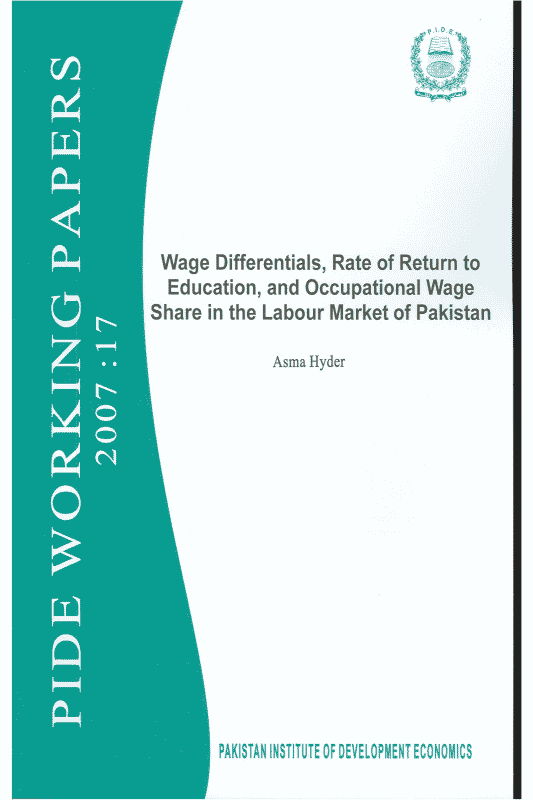
Pakistan Institute of Development Economics
- Home
Our Portals
MenuMenuMenuMenuMenuMenuMenu - ResearchMenuMenuMenuMenuMenuMenuMenu
- Discourse
- The PDR
- Our Researchers
- Academics
- Degree Verification
- Thesis Portal
- Our Portals
Wage Differentials, Rate of Return to Education, and Occupational Wage Share in the Labour Market of Pakistan
This paper examines the magnitude of public/private wage differentials in Pakistan using data drawn from the 2001-02 Labour Force Survey. Pakistan Labour Force Survey is a nationwide survey containing micro data from all over the country containing demographic and employment information. As in many other countries, public sector workers in Pakistan tend to have higher average pay and educational levels as compared to their private sector counterparts. First, this paper presents the inter-sectoral earning equations for the three main sectors of the economy, i.e., public, private, and state-owned enterprises. These results are further decomposed into “treatment” and “endowment effect”. To examine the role of human capital in wage gap, the rate of return to different levels of schooling is calculated. These rates of return to education may be important for policy formulation. The relative earning share is also worked out to look into the distribution of wages across the occupational categories. The earning equations are estimated with and without correction for selectivity, which is also the main objective of the study, i.e., to find out if any non-random selection is taking place within these three sectors of employment.



